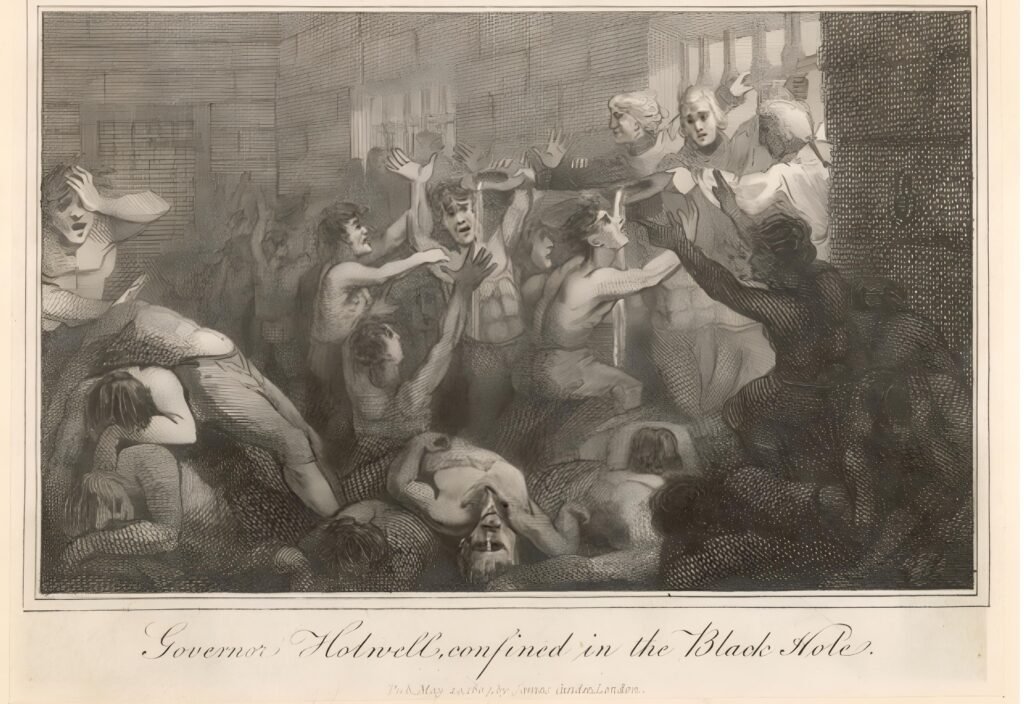Kolkata, formerly known as Calcutta, has been historically referred to as the “Black City” for multiple reasons, including colonial oppression, economic disparities, industrial pollution, and historical events like the Black Hole of Calcutta. Below is an extensive analysis of the possible reasons behind this name.

1. The “Black Hole of Calcutta” Incident (1756)
One of the most infamous incidents in Kolkata’s history is the Black Hole of Calcutta, which occurred in 1756 when Nawab Siraj-ud-Daulah of Bengal captured Fort William from the British East India Company.
- It is said that 146 British prisoners were locked in a small, poorly ventilated dungeon overnight.
- By morning, only 23 survived, as the rest reportedly died due to suffocation and heat.
- Although some historians debate the accuracy of this event, British propaganda used it to paint Kolkata as a city of darkness and brutality, which might have contributed to the “Black City” label.
2. The British Colonial Segregation: “White Town” vs. “Black Town”
During British rule, Kolkata was divided into two major sections:
- White Town → Occupied by British officials and wealthy Europeans. It had well-planned roads, gardens, and grand buildings.
- Black Town → Where the native Indian population lived. This area was congested, poorly maintained, and lacked proper sanitation.
How It Contributed to the Name
- The British referred to the native settlements as “Black Town” due to racial and economic discrimination.
- Many British writers and officials used derogatory terms for Indian-populated areas, reinforcing the “Black City” imagery.
- Even today, traces of this colonial divide exist in places like Dalhousie Square, Esplanade, and North Kolkata, which were formerly the boundary between these zones.
3. Industrialization and Pollution (19th–20th Century)
By the 19th century, Kolkata had become the capital of British India and a hub for industrialization. The rapid growth of industries brought pollution and environmental degradation:
- Coal-Based Industries → Heavy industries like jute mills, textile factories, and power plants emitted smoke, turning parts of the city dark with soot.
- Polluted Hooghly River → Unregulated waste dumping blackened the waters and contributed to unhygienic conditions.
- Poor Urban Planning → Overcrowded streets and unregulated construction made certain areas of the city dark and dingy.
The combination of smoke, dust, and a lack of proper sanitation gave Kolkata an appearance that some described as “blackened” or gloomy, reinforcing the name.
4. Extreme Poverty and Economic Inequality
Kolkata has always been a city of contrasts, with extreme wealth coexisting with extreme poverty.
- During colonial rule, the British elite lived in luxurious bungalows while the Indian working class lived in slums and overcrowded areas.
- Even post-independence, Kolkata struggled with unemployment, leading to high poverty rates and increasing the perception of it as a “dark” or struggling city.
The Role of Famines
- The Bengal Famine of 1943, which resulted in millions of deaths, worsened Kolkata’s reputation as a place of suffering and despair.
- British policies, including food hoarding, contributed to the crisis, making Kolkata a center of misery in the eyes of many.
5. Lack of Proper Street Lighting and Dark Alleys
Before modern urban development, Kolkata was known for its narrow lanes, unlit streets, and crowded bazaars.
- In the 18th and 19th centuries, many parts of the city remained poorly illuminated, making them unsafe at night.
- Crime and robberies were common in these dark streets, which further contributed to Kolkata being metaphorically seen as a “black” or dangerous city.
Even today, older parts of Kolkata, such as North Kolkata, Chitpur, and Kumartuli, retain some of this historical ambiance with their dimly lit alleyways.
6. Black Magic and Occult Practices in Kolkata
Kolkata has a historical connection with Tantra, mysticism, and occult practices, particularly in areas like:
- Kali Temple in Kalighat → Associated with dark rituals and sacrifices.
- Tarapith → A famous site for Tantric practices located near Kolkata.
- Old Cemeteries (Park Street, South Park Street Cemetery) → Some British
Also read, Why Kolkata is Called ‘City of Joy’?
